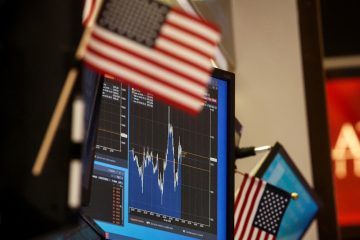Sears Is Dying And I’m Buying
Sears Holdings Corp. (Nasdaq: SHLD) is dying and its largest shareholder, chairman and CEO, Eddie Lampert, is dismantling the retail giant and selling it for parts.
However, investors who have held on despite a 52% share price drop from April 2010 highs could be in for a nice reward; that is, if Lampert gets his way and if those same investors can see past the bad.
Since 2007, revenue at Sears Holdings has steadily declined, while earnings per share have been negative for the previous 16 consecutive quarters.
The company shuttered 56% of its stores since 2010. It spun off Sears Hometown and Outlet in October 2012, the clothing brand Land’s End in April 2014 and Sears Canada in October 2014.
These asset sales provided SHLD with desperately needed cash, which has kept its remaining 1,725 stores stocked with merchandise. Of that, SHLD owns 183 Kmart stores and 501 Sears locations, and it leases 796 Kmart and 245 Sears stores.
Nonetheless, the numbers clearly show a dying retailer in dire need of more capital. In its most recent filing, Sears Holdings had $ 3.8 billion in debt, but only $ 250 million cash on hand; 76% less cash than the fiscal year prior.
Last November, Lampert disclosed a plan to raise liquidity. The company will spin off between 200 and 300 of its most profitable locations into a real estate investment trust, or REIT, by mid-year. Those properties will then be leased back to Sears, or to another tenant.
This capital structure removes the costs and risks associated with a traditional retailer, like seasonality or purchasing and moving inventory. Instead, the REIT can act as a cash-generating machine.
Management estimates this will generate proceeds in excess of $ 2 billion for SHLD, which assumes these properties are worth a certain dollar value, on average.
Still one question remains unanswered: how much is each location really worth, and thus, how much will the REIT be worth? Below is a table showing the average value per location if the spin off generated exactly $ 2 billion.
Management’s conservative estimates value the real estate between $ 6.67 million and $ 10 million per store. However, if history is any guide, then these stores are worth much more.
Since 2010, Sears Holdings sold 29 Sears and Kmart facilities for an average profit (not price, but profit) of $ 28.5 million per location, according to data compiled from SEC filings.
At that price, the value of a REIT holding the 200 best locations is $ 5.7 billion, and a REIT holding the 300 best is worth $ 8.55 billion.
If Sears only gets an average of $ 14.25 million per location (half of the value received, on average, for the 29 previously sold stores), then the value of a 200- and 300-store REIT is $ 2.85 billion and $ 4.3 billion, respectively.
This could be huge for investors who take a position in the REIT.
The logical question still remains: should investors buy shares of SHLD now and wait to be assigned shares of the REIT or simply buy into the REIT once it is publicly traded?
I argue that the former is the preferred option. History shows that after a hotly anticipated security hits the market it tends to realize rapid share price gains. If you wait until the REIT is traded on the open market, then you stand to pay a premium to invest.
Keep in mind, owning shares of SHLD is not necessarily a bad thing in and of itself. Eddie Lampert is on the short list of investors considered “The Next Warren Buffett,” and is clearly extracting wealth from Sears for himself and any shareholder savvy enough to follow suit.
The injection of capital from the REIT will sustain Sears Holdings for a while, but unless the Shop Your Way business model, which now accounts for 70% of annual sales, picks up steam, the long-term outlook for SHLD is tenuous, at best.
Whether Lampert is attempting to save the distressed retailer or slyly scraping it for parts is a debate for another day. But if you follow his lead, then there is surely money to be made.
Risks To Consider: First and foremost, investing in SHLD or related entities is not for the faint of heart. Only take a position in accordance with your risk tolerance. Second, the REIT spin off could fall through for a number of reasons, which would leave SHLD in dire need of liquidity.
Action To Take –> Investors surely see the potential windfall from this spin off, as shares are up nearly 29% in 2015. However, the stock has a beta of 2.77, meaning it is nearly 2.8 times more volatile than the market. Wait for shares to drop in the next few weeks and take a small position. Once the REIT is spun off, reevaluate whether SHLD is still an investment worth maintaining.
With SHLD, you’ve got a risky investment. Now you need one of the world’s best companies to balance your portfolio. Look no further than StreetAuthority’s list of “The Top 10 Stocks For April 2015.” Since we first began publishing this research report in 2003, our picks have beaten the overall market eight times , including years with average gains of 37%… 38%… and 39%. For comparison, the S&P 500 gained more than 30% in only one year since 2003. To learn more about this list of elite companies, click here.

